Salix Caprea: [Characteristics, Cultivation, Care and Disadvantages]

Important points when sowing Salix caprea:
- When? Salix caprea can be sown during the fall months for best results.
- Where? Salix caprea can be planted in open sites, so it is likely to be found forming forests, accompanied by oak, chestnut or poplar trees and other varieties of deciduous trees.
- How do we water? Irrigation for Salix caprea should be few and constant during the spring. Then abundant irrigations will be applied, but more scarce during the rest of the year.
- How often do we water? Salix caprea requires irrigation with an intermediate point, that is, always trying to maintain stable soil moisture.
- What care does it require? Salix caprea is very undemanding when it comes to care for its reproduction and development. The soils for sowing Salix caprea must contain anacidic, neutral or alkaline pH.
- What pests and diseases affect you? Among the pests that attack Salix caprea are borers, bugs, caterpillars and alsothe willow aphid.
What characteristics does the salix caprea plant have?
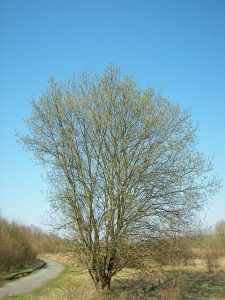 Salix caprea is a bushy plant, with an elegant, straight and firm appearance, belonging to the Salicaceae family and the Magnoliopsida class.
Salix caprea is a bushy plant, with an elegant, straight and firm appearance, belonging to the Salicaceae family and the Magnoliopsida class.
Its scientific name «Salix» is derived from the Latin word for willow, and «caprea», which means «of the goats» or «goat». Goats are said to like the leaves of the plant.
Among the most common names of the plant are: black salguero, sargatillo, willow, goat willow, goat willow, lesser willow and goat willow.
The tree is many-branched, like most willows, and can reach a height of 10 meters and up to 8 meters in diameter. It is characterized by its torn bark with cracks and a brown color that, when chipped, has a smooth texture and without streaks.
The dark green leaves are deciduous, alternate and simple, elliptic, oval or round, measuring 11 centimeters long and up to 5 to 8 centimeters wide . Within the variety of willows, Salix caprea is characterized by having the widest leaves of all of them.
Its flowers are of the hanging type, they have a velvety appearance, with a soft texture, they measure from 3 to 7 cm and are grouped in catkins. The flowers are born long before the leaves and are equipped with dioecious reproductive units: the male ones are yellow and the female ones are light green.
The fruits are in the form of small capsules between 5 to 10 millimeters long, and contain a large number of very small seeds, with a cottony plume. It has its origin in Europe, especially from Spain to Norway, and in Asia, especially in the region of Syria.
Salix caprea is characterized by being a shrub with a beautiful presence and a noble plant highly valued in the field of wood, textile, ornamental and also for its medicinal properties.
Yellow or blue pigments are extracted from the bark of the plant, which are used to tan leather because it is rich in tannins, and it contains salicin, which is analgesic and anti-fever.
When to plant salix caprea?
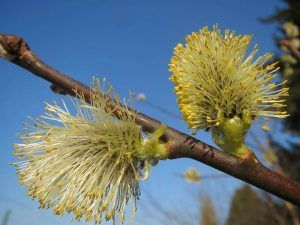 Salix caprea can be sown during the fall months for best results.
Salix caprea can be sown during the fall months for best results.
It can reproduce through pollination, which happens under the breeze and the wind, with the support of insects known as hymenoptera.
It also reproduces by dispersing the seeds, of the ripe fruits, which with the support of the wind are planted naturally.
Where to plant salix caprea?
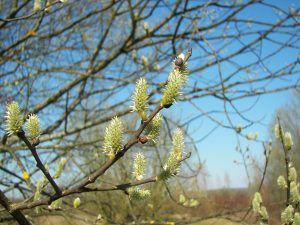 Salix caprea can be planted in open areas, so it is likely to be found forming forests, accompanied by oak, chestnut or poplar trees and other varieties of deciduous trees.
Salix caprea can be planted in open areas, so it is likely to be found forming forests, accompanied by oak, chestnut or poplar trees and other varieties of deciduous trees.
For its cultivation, Salix caprea likes places that contain sufficient humidity, such as the banks of rivers or lakes, also in places where there are tributaries of water such as in the mountains.
It is a species that can be found in valleys, open terrain and forests with humid characteristics.
How do we water the salix caprea?
Irrigation for Salix caprea should be few and constant during the spring. Then abundant irrigations will be applied, but more scarce during the rest of the year. The roots of Salix caprea store water to withstand drought and love moisture to grow healthy and strong.
How often do we water the salix caprea?
Salix caprea requires irrigation with an intermediate point, that is, always trying to maintain stable soil moisture. The time between the irrigations of the salix caprea will depend on factors such as: temperature, exposure to the sun, environmental humidity, texture of the support, among others.
How to plant a salix caprea step by step?
The planting of the salix caprea plant should be done during the fall and directly in the ground.
- Select the place where the salix caprea will be planted in full sun or semi-shade.
- Dig a hole in the designated space that has cool, light, moist soil.
- Sow a cutting or a Salix caprea plant that comes from a healthy and strong specimen.
- Add organic fertilizer.
- Compact the substrate immediately once the specimen is planted.
- Water the plant with plenty of water, without flooding.
- Apply a fertilizer in the irrigation water during the spring so that the plant receives the nutrients and vitamins it requires for its development.
What care does Salix caprea need?
Salix caprea is very undemanding when it comes to care for its reproduction and development:
- The soils for sowing Salix caprea must contain an acidic, neutral or alkaline pH.
- It will also grow vigorously on supports with a sandy, loamy, clayey or very clayey texture.
- Salix caprea likes to live in deep, loose soils and does well at altitudes up to 2,100 meters above sea level.
- The plant substrate can be kept dry, moist or soaked.
- The plant has medium light requirements and can be placed in a semi-shaded place or with direct exposure to the sun indistinctly.
- After the first flowering, a good maintenance pruning is recommended, which the plant will appreciate.
- During the spring, Salix caprea also appreciates the application of fertilizers placed in the irrigation water, preventing the roots from suffering any damage.
What pests and diseases affect Salix caprea?
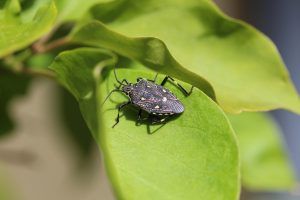 Among the pests that attack Salix caprea are borers, bugs, caterpillars and also the willow aphid.
Among the pests that attack Salix caprea are borers, bugs, caterpillars and also the willow aphid.
All these insects and pests affect and damage the leaves, flowers, fruits and the bark of the plant, which cracks easily.
The branches of the Salix caprea can also suffer from the inclemencies of low temperatures and the weight of the ice that forms the snow. This tree can suffer from diseases related to fungi, products of malpractice when it comes to irrigation.
How long does a salix caprea live?
It has a beneficial longevity when planted in the right working conditions, reaching up to 300 years.
How long does it take to grow a salix caprea?
It takes its time to develop the structure and it is likely that in its 20s it is still growing.
How long does it take to produce fruit?
It will take more than 10 years to produce its first fruits, although this depends a lot on the conditions in which it is planted.
Can it be grown in a pot?
It is possible to grow it in a pot and take advantage of it to beautify areas other than the garden, such as terraces.
How many times does a salix caprea produce fruit?
The normal thing is that it generates a single fruit production per year.
Should a salix caprea be pollinated to obtain fruit?
The flowers are pollinated without animal or human intervention, thanks to the force of the wind.
How cold can a salix caprea tolerate?
Cold seasons do not harm it and it is even capable of coping with frosts down to -7° C.
How many salix caprea can be planted per hectare?
Due to its dimensions and taking into account the plantation framework, 300 Salix caprea specimens could be available in one hectare.
What type of fertilizer does a Salix caprea need?
The ideal fertilizer for this species is organic and has a slow release to maximize its use results.
How much heat and/or drought can a Salix caprea tolerate?
It is better to work it in environments where summers barely exceed 30° C so as not to damage its structure.
It is sensitive to drought, so it is better to work with it carefully when it comes to irrigation.
Bibliographic references
- Presence of the goat willow, Salix caprea L.(Salicaceae), in the province of Castellón, JMA Rojo – Acta Botanica Malacitana, 2008 – dialnet.unirioja.es
- Taxonomic characters of the genus Salix L., I: Salix purpurea L. sl, PBF de Caleya – Lagascalia, 1988 – dialnet.unirioja.es
- Review of the genus Salix (salicaceae) in the Province of Mendoza, Argentina, E Méndez – 2012 – ri.conicet.gov.ar
- Contribution to the study of Salix spp. in Mexico, CR GARCÍA – 2002 – files.products-department …
- CONTRIBUTIONS ON THE GENUS SALIX (SALICACEAE) IN CHILE, J Amigo – chlorischile.cl


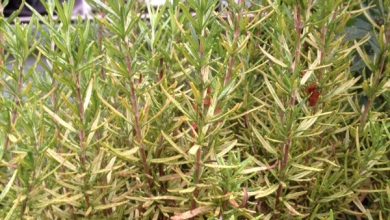
![Photo of Nymph Care: [Soil, Moisture, Pruning and Problems]](https://www.complete-gardening.com/wp-content/uploads/2022/08/nymph-care-soil-moisture-pruning-and-problems-390x220.jpg)
![Photo of Kiri: [Cultivation, Irrigation, Care, Pests and Diseases]](https://www.complete-gardening.com/wp-content/uploads/2021/06/Kiri-390x220.jpg)
